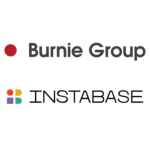
Intelligent automation (IA) combines capabilities that enable organizations to mimic, replicate, or augment human activities. It has evolved beyond robotics process automation (RPA), a capability designed to automate mundane and rules-based tasks. Intelligent automation surpassed RPA with features such as:
- Low-code/no-code development platforms: enable rapid design and development of small applications or automations through virtual and drag-and-drop interfaces.
- Intelligent document processing (IDP) and optical character recognition (OCR): digitize and index unstructured sources such as paper documents, emails, and forms into data and information using image-based recognition and machine learning algorithms to extract what is most relevant.
- Natural language processing (NLP): structured, semi-structured, and unstructured data are extracted for further analysis around context to enable downstream manipulation or application. NPL has paved the way for conversational AI and sentiment and contextual analysis to power things like e-discovery and virtual agents
- Machine learning (ML): a subset of artificial intelligence (AI) that enables machines to learn for themselves from data.
More intelligent automation tools are available today than ever before to support business enablement and drive operational efficiency across core software, automation players, and cloud-native platforms. Consequently, organizations can add more to their transformation tool belts to tackle more significant portions of their business processes. In addition, access to these tools has been made easier through advances in cloud technologies.
2023 will be a year of significant automation potential due to continued talent shortages, soaring labour costs, inflation pressures, and increasing customer demands. Therefore, leaders should stay up-to-date on the latest automation trends and technologies to drive innovation and create competitive advantages. Below are intelligent automation trends we have identified for next-generation evolutions, convergence in capabilities, market fragmentation, consolidation, and partnerships.
5 trends in intelligent automation
-
Augmenting tools with intelligent automation
Core software platforms have augmented their tools with automation in mind to provide stronger same-platform capabilities. Here are some examples:
- Salesforce acquired MuleSoft’s automation stack to re-enforce its leading CRM, modern integration, and application programming interface (API) architecture focus.
- OpenText Intelligent Capture and Beautiful WebForms are other examples of how existing or new platform users can leverage IA tools on existing core platforms.
- SAP acquired Contextor SAS to accelerate its RPA and machine learning portfolio. SAP Intelligent RPA remains present in their software development kit.
- ServiceNow has a tailored offering around managing hyperautomation through its Service Management platform. It also has a low-code capability for customizing workflows.
- Kofax developed an RPA capability within their TotalAgility platform.
- Most automation vendors are working hard to develop connectors for other common core enterprise software that has not yet moved into the IA space.
-
Next-generation evolutions of RPA tools
Traditional RPA vendors have moved beyond RPA. They have built, enhanced, and integrated more intelligent capabilities on a single platform. These vendors also focus on automation opportunity discovery through process intelligence and task mining.
- UiPath mixes homegrown and an acquired suite of tools. Consequently, UiPath expanded and deepened its low-code, intelligent document processing, natural language processing, and machine learning capabilities with its recent releases and acquisitions. UiPath can accelerate adoption and reduce barriers to entry through their partnerships and assets with core enterprise software.
- SS&C acquired Blue Prism earlier this year to enhance its position in intelligent automation. SS&C focuses on a hyperautomation-geared offering that integrates RPA, workflow, low-code, and intelligent automation in one platform through homegrown builds, partnerships, and OEMs. Their process intelligence capability is powered by ABBYY timeline
- Automation Anywhere continues to focus on hyperautomation by offering Discovery Bot, a process discovery solution, Bot Insights, an RPA analytics solution, and IQ Bot, a document processing solution, in one integrated suite. In addition, Automation Anywhere took over Fortress IQ in 2021 as part of its focus on process mining.
- Microsoft has matured the automation capabilities available with most Enterprise and Cloud bundles. Recently, Microsoft has enabled the orchestration and deployment of automation on virtual desktop infrastructure (VDI) that users can manage through Azure services. PowerApps and Power Automate are low-code, lightweight, and effective on simple projects. However, traditional automation tools typically fair better when working with complex projects and legacy systems. Look for more from Microsoft in this space in the near future.
-
A fragmented marketplace for intelligent document processing

- ABBYY and Kofax are long-term powerhouses in the OCR space. They both have a long history of document digitization offerings. In addition, they continuously innovated through partnerships and acquisitions to improve their accuracy and AI capabilities.
- UiPath and SS&C Chorus are both traditional RPA vendors that have rolled out IDP capabilities to complement their RPA capabilities,
- Parascript is a leader in handwriting recognition. As a result, many of Parascript’s current IDP tools leverage its handwriting recognition capabilities.
- Indico, Sortspoke, and Eigen are niche IDP platforms focused on extracting and processing data from large, complex unstructured sources, such as contracts and emails. These platforms have built-in NLP engines, which make them user-friendly and easy to implement.
-
Automating enterprise workflows
The growing importance of end-to-end process automation has pushed process orchestration and workflow automation to the forefront of intelligent automation. Native integrations, pre-built integrations, and advances in integration tools, such as integration platform as a service (iPAAS), have increased the options for straight-through processing beyond RPA. These tools are known as intelligent business process management suites (iBPMS). They help to stitch together potentially disparate RPA, AI, human, and direct integration capabilities of an end-to-end process through low-code developed workflows or specialized software. Leaders in iBPMS include Camunda, SS&C Chorus, Workato, Appian, and Pega. The nature and complexity of these workflow automations will vary depending on business process nuances and the underlying system complexity of your organization and can be achieved through traditional workflow methods, although less effectively.
-
Advances in cloud-native capabilities
Cloud-native providers offer intelligent automation capabilities through cognitive services quickly and on demand. Advances in cloud-native capabilities provide different avenues for organizations to consider for their solution delivery, such as leveraging pre-built components, tools, and artificial intelligence and machine learning models on pay-as-you-use utility models. Organizations are already mobilizing or preparing for moves to cloud services across infrastructure, platforms, applications, integration, and data. Amazon Web Services (AWS), Google Cloud, and Microsoft Azure are driving advances in cloud-native capabilities.
Looking ahead
Companies face the challenge of determining the right choices for their unique organization, given a range of intelligent automation options and a shifting technological landscape. They must consider their business strategy, enterprise architecture, and existing technology capabilities. They must also plan according to their present needs and anticipate the future, lest they end up with a Frankenstein-like architecture of siloed IA capabilities embedded across the business.
Traditional technology sourcing and implementation do not always apply to intelligent automation capabilities, particularly when leveraging more intelligent functionality. The traditional perspective of having a single tool or model may not always be the correct approach. When deciding which IA options to implement, companies have an opportunity to take on larger projects and optimize their portfolio of digital workers through new platforms and best-in-class capabilities. For example, depending on the business problem, a company can validate multiple AI models or collectively reinforce each.
Though navigating the myriad of tools and capabilities for automation is complex, companies that don’t explore intelligent automation risk duplicating and fragmenting their capability development and missing opportunities to leverage intelligent automation technology to gain a competitive advantage.
How we support organizations with intelligent automation
At Burnie Group, we pride ourselves on being at the forefront of new and innovative technologies that can help address our clients’ most pressing operational needs. If you struggle to determine the best strategy or approach for automation, regardless of how far along you are on your journey, Burnie Group can help. We would be happy to share our thoughts, perspectives, and how we can help you navigate the IA landscape.
By: Najeeb Saour, Practice Leader & Charles Xie, Senior Engagement Manager
Read more of our insights on automation
Find out more about how intelligent automation can transformation your operations.
CONTACT US





